Medias
Image
The image (as a file on the hard disk) is one of the important data in MindDev. It can be used in different cases.
Image format
MindDev supports both Jpeg and Png formats.
Image in 2D space
The image can be assigned in 2D space. This results in an image displayed in the foreground in front of the 3D objects in the scene. The image entity offers control over the positioning as well as the projection size on the screen.
Coordinate repository
The coordinates of the image are expressed as a percentage of the screen, with an origin point at the center of the display. The coordinates of the edges of the image are therefore {-0.5;-0.5} and {0.5;0.5}. It is quite possible to use larger coordinates, but the image will go off the screen.
Depth order
If two images are overlapping, it is possible to control which image to display in the foreground and which in the background via the "Z Order" property.
Image in 3D space
The image can be assigned to a 3D object. It will be placed on the object in correspondence with the UVW coordinates of the mesh.
Applying an image to a 3D object
An image cannot be applied directly to a 3D object. The image is applied to a material which itself is applied to the object.
Audio
In MindDev, sounds do not have their own existence. They are behaviors that play audio files. It is quite possible to play sound files in MindDev and the software offers configuration possibilities.
The procedure for creating a sound effect is to first create a 3D object (it can be empty) on which to attach a behavior script of type "Sound player".
Audio file formats
Only .Wav and .Ogg formats are supported in MindDev.
Sound instruction

MindDev provides the ability to play a sound file during an instruction using the "Sound Instruction" instruction.
Instruction duration
This does not mean that the instruction is finished when the sound file is played back. The duration of the instruction depends on its basic parameter "Duration".
Sound instruction
It is possible to add 2D content to the sound instruction. This allows, for example, to write a text which is read at the same time.
Experimental sounds
All experiments have built-in sounds that are played in different situations: success or failure of the trial, sounds emitted when the subject moves in a 3D experiment, etc. Some experiments allow to modify the sound emitted in certain situations.
Experimental sounds
Although all experiments support built-in sounds, very few allow their configuration. Sounds are often assigned by code.
Video
MindDev offers the ability to add video sources (which may or may not have sound). Like audio files, videos do not have their own existence: the video is played on a medium. This medium can be a 2D image or a 3D object. The application of the video and its playback are controlled by the "Video Player" behavior script.
Video file format
Only .mp4 container is supported in MindDev.
Video in 2D space
2D video consists in assigning a video player to a 2D image. The video is played in 2D space, in front of the 3D elements. In this case, the video must not be a 360° video.
Using 2D video
We mainly use 2D videos in 2D experiments. In the case of a 3D experimentation, we advise to integrate the video in the 3D space.
Video in 3D space
The 3D video consists in applying a video player on a 3D object present in the scene. During the application, the object is covered by the content of the video according to the UVW coordinate application rules of the mesh.
Video in 3D space
We recommend playing video in 3D space with an application of the video player on more or less flat objects, so as to make the video readable.
360° Video
In MindDev, there is no way to play a 360° video directly. The source file, if it displays a 360° video must be used as a video in 3D space placed on a sphere encompassing the subject.
MindDev offers 3 3D objects specifically designed to host 360° videos. Two spheres have UV coordinates allowing to play videos either equirectangular and equirectangular stereoscopic (one half of the image is not used in this case to project in monoscopy) and a cubic object allowing to project videos plated in the shape of a tennis ball.
| Video | Projection |
|---|---|
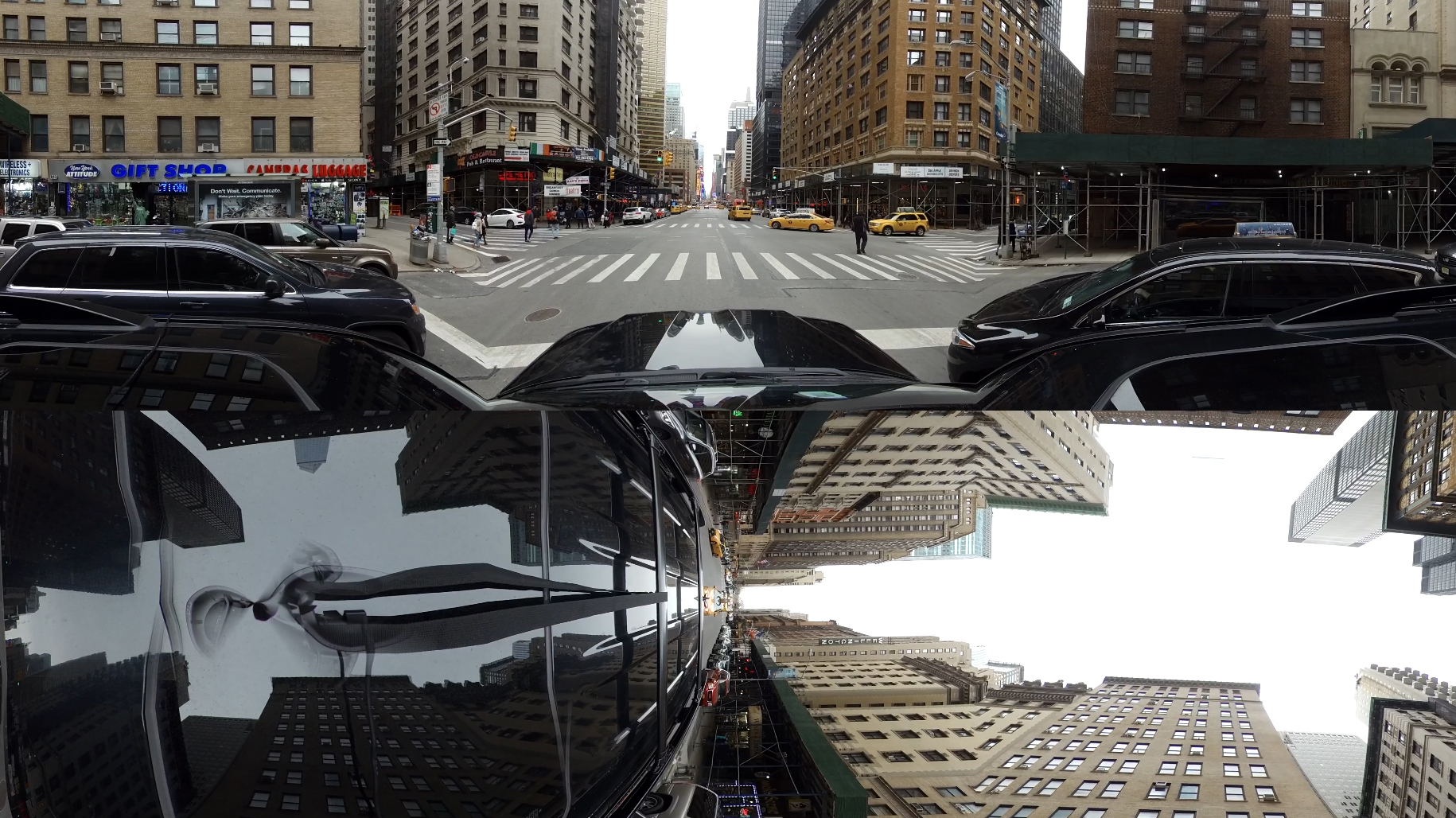 |
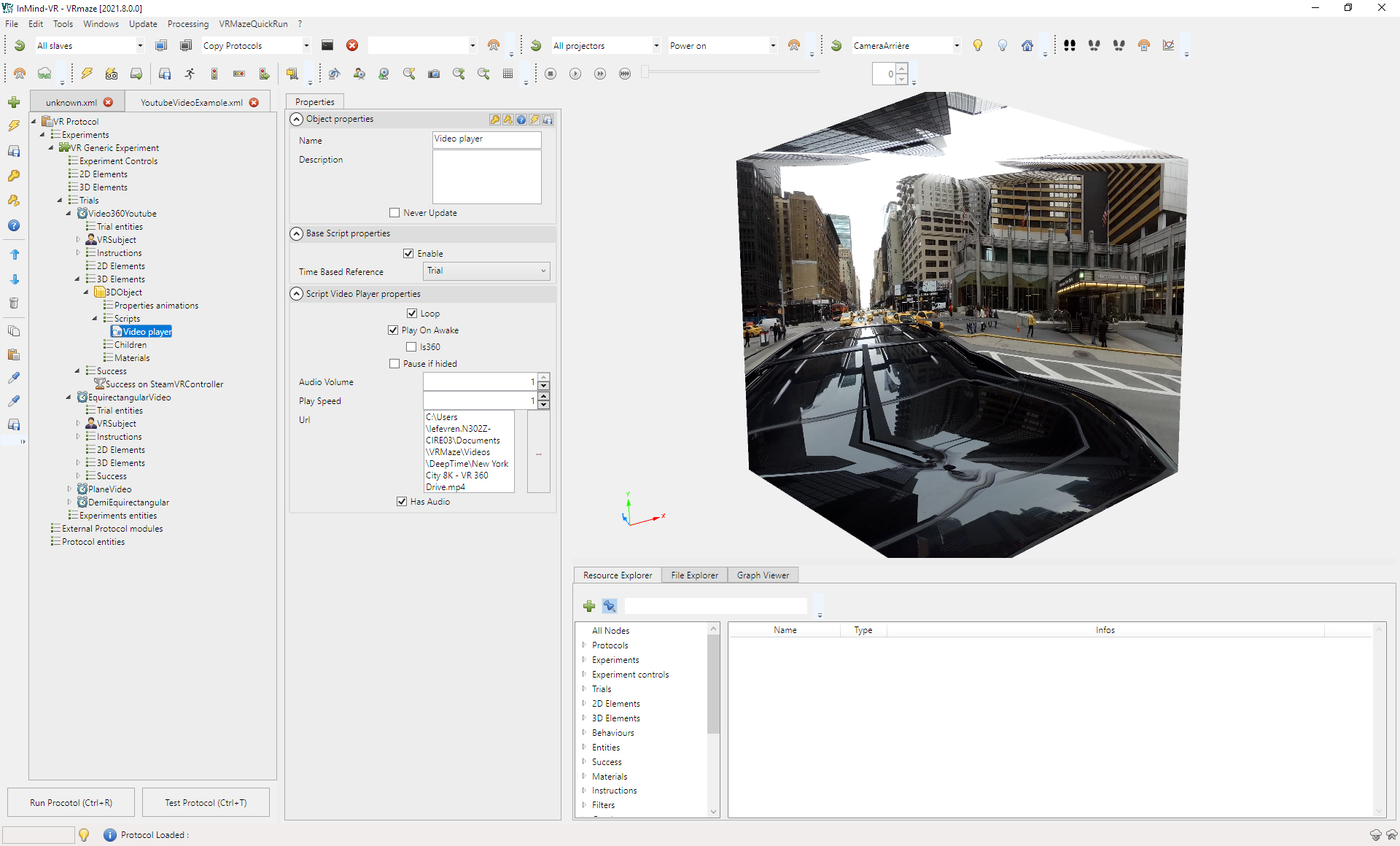 |
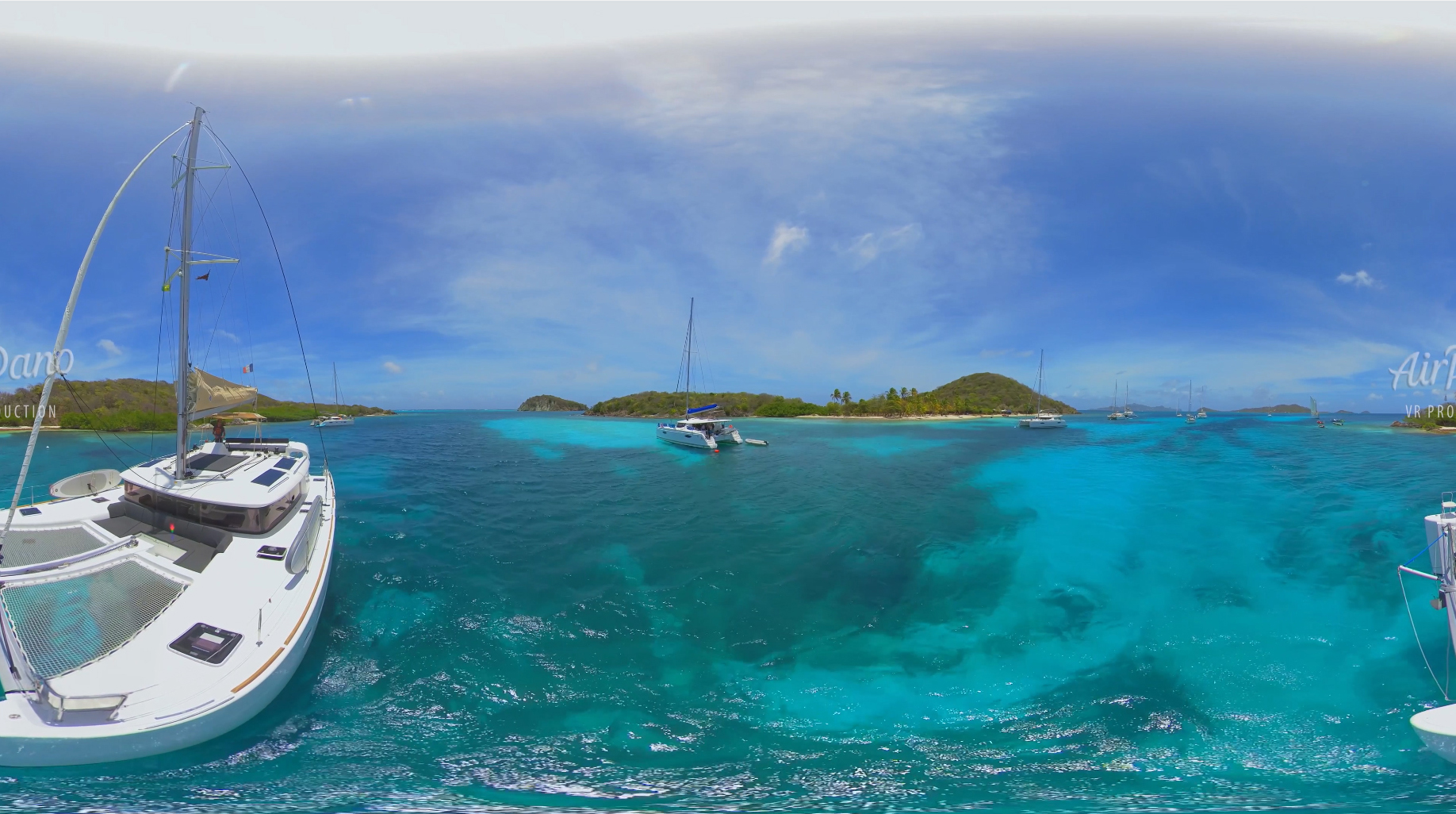 |
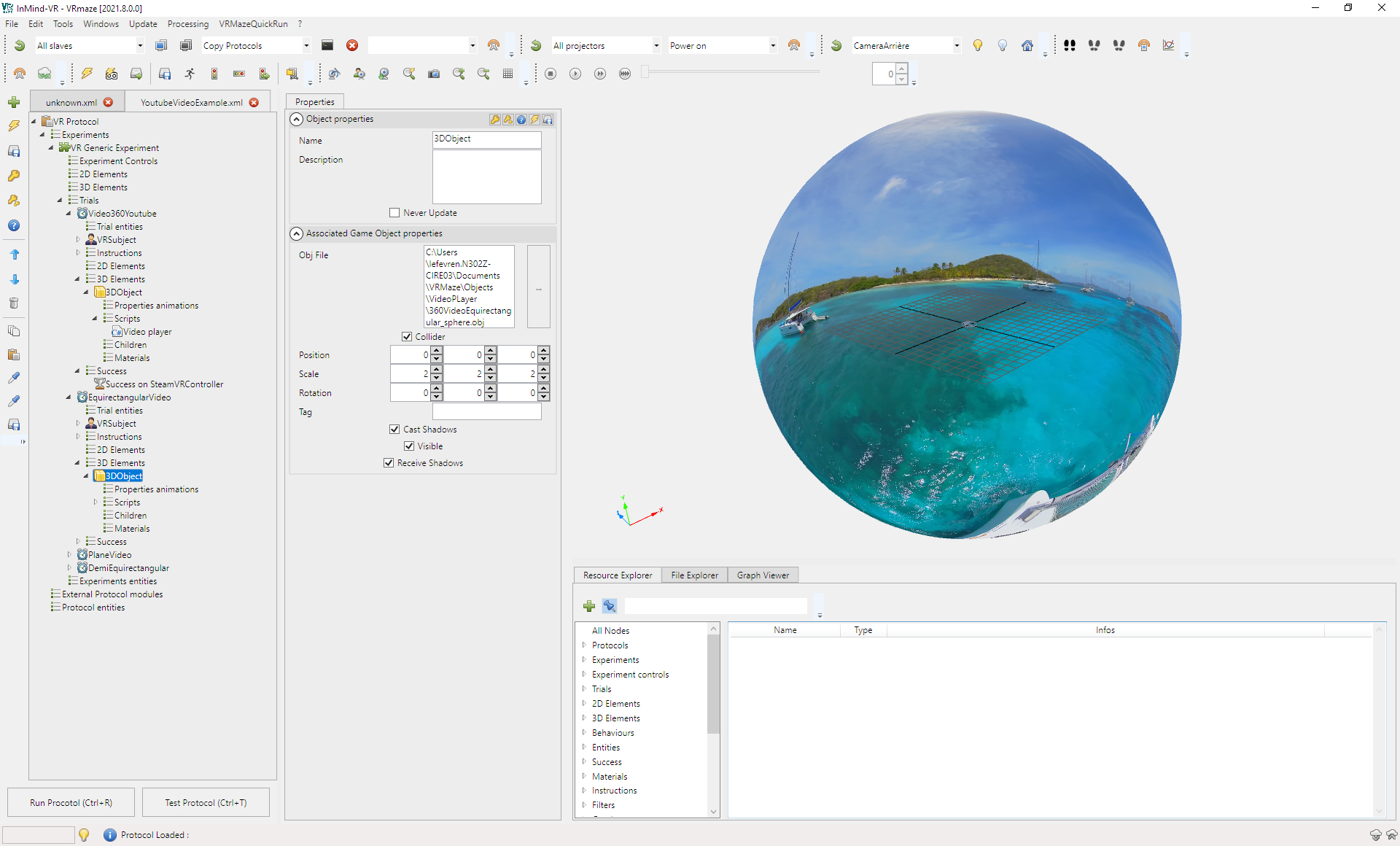 |
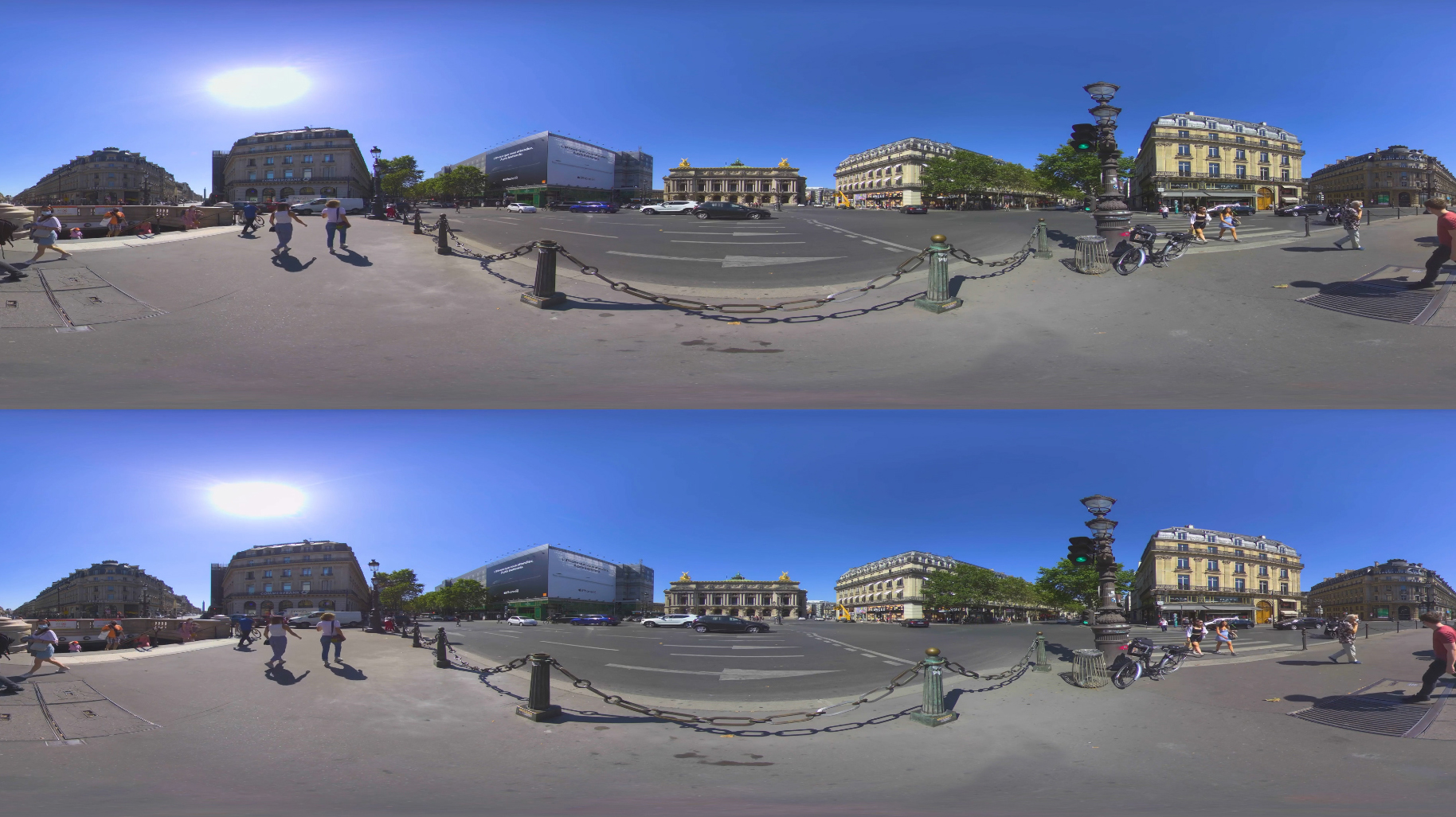 |
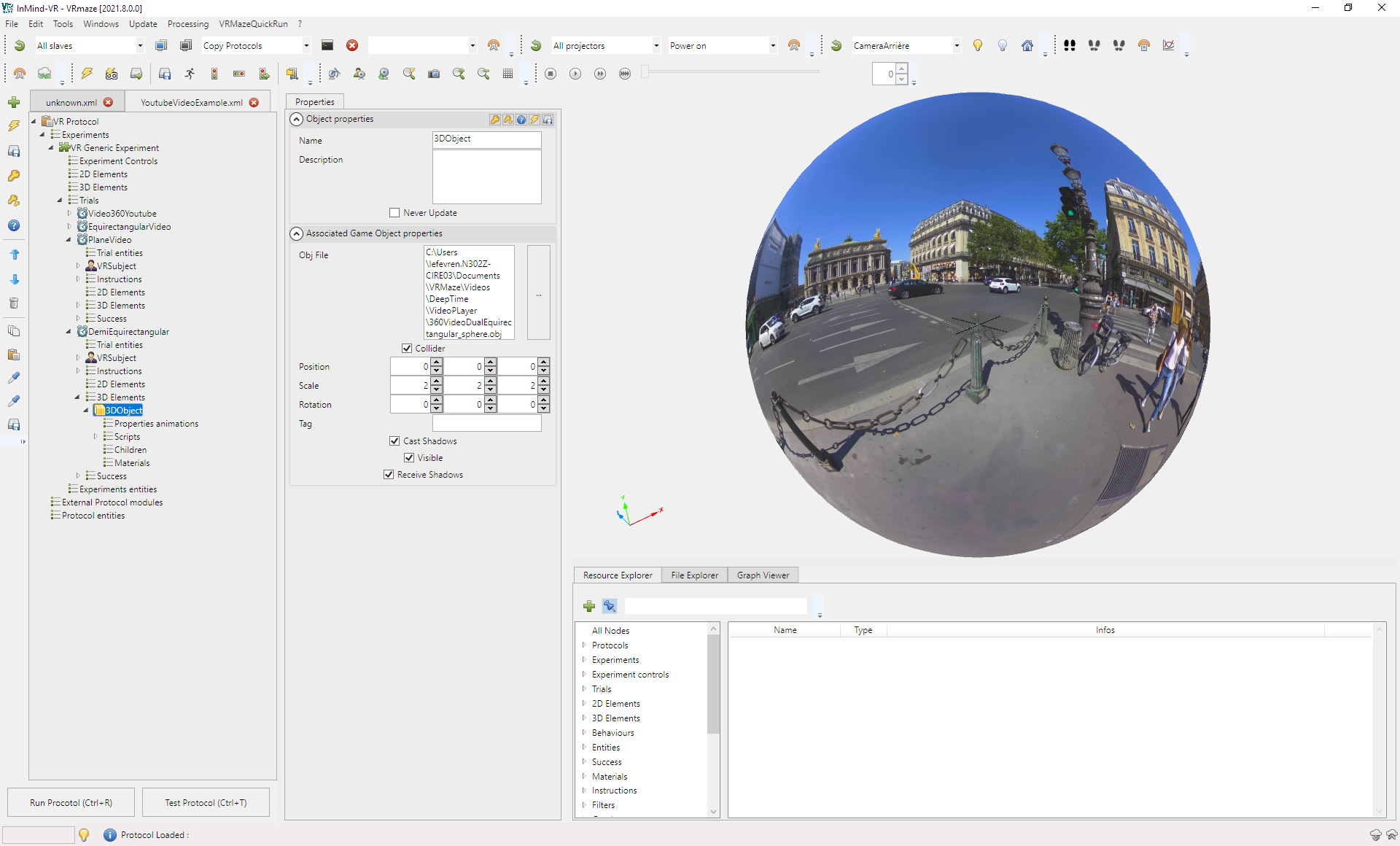 |
360° and VR videos
The interest of a 360° video is to be played with a VR device. In MindDev, the creation of such a player is very simple. It consists of placing the projection sphere at the participant's location with a script that copies the position of the virtual reality headset at each moment.
Non 360 video in VR
The last case concerns the playback of non 360° video in VR. The idea of VR is to be able to move in a virtual 3D space. Placing a non-VR video in front of the participant's eyes is not a correct solution because of the uncomfortable feeling it causes.
MindDev provides a virtual environment to play a flat video in VR. Instead of playing the video directly in the foreground, the participant is immersed in a cinema environment in which the video is played. The participant is therefore sitting on his chair and watching a video or any other part of the environment surrounding him.
Do not project a flat video on a HMD
Do not project a flat video on HMD, the feeling of discomfort would be caused very quickly in the participant.